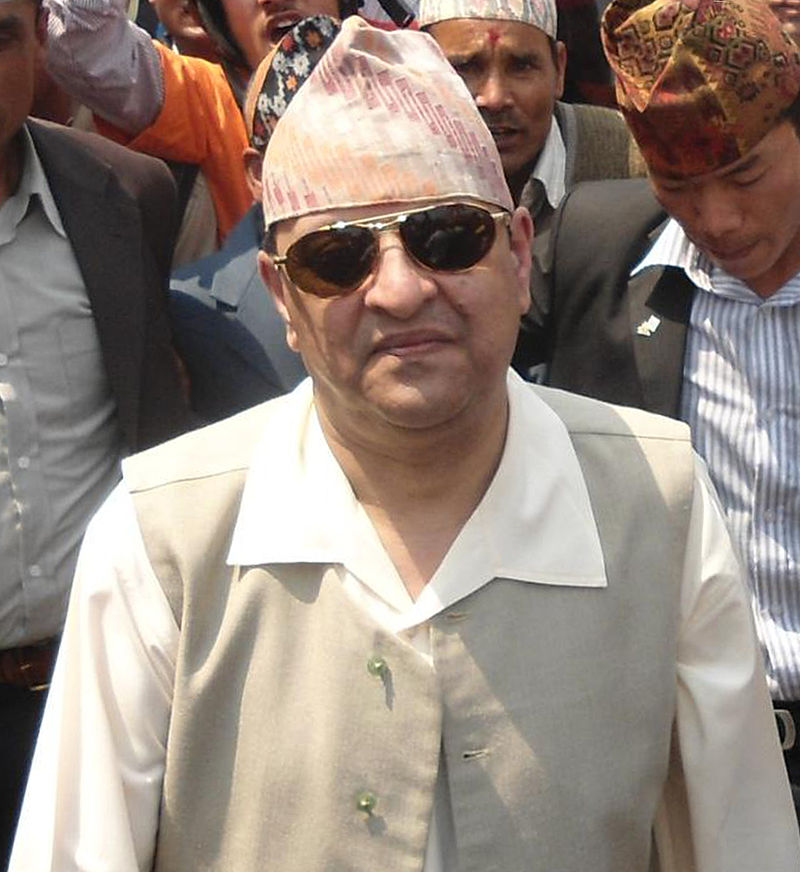Dnyánendra (Kathmandu, July 7, 1947 -) Nepalese (Dnyánendra Bir Bikram Shah), English: Gyanendra Bir Bikram Shah, King of Nepal, the last king of the Shah dynasty. His father is King Mahendra of Nepal, his mother is Princess Indra of Nepal, Kumar Hari Samser Jang She is the daughter of Bahadur Rana. Like her brother, King Birendra, she studied at St Joseph's College in Darjeeling and then at Tribhuvana University in Kathmandu, where she obtained a baccalaureate (BA) degree in 1969. On May 1, 1970, he married Komal (1951– ), daughter of Kendra Shamsher Jang Bahadur Rana, a descendant of the Shah dynasty on her mother's side, and her sister Aisvari (1949–2001) was the wife of Dnyánendra's brother, King Birendra. 1950 . on November 6, the heir to the throne Mahendra's second-born son, Prince Dnyanendra, who was three years old at the time, was proclaimed king in Kathmandu. The next day, on November 7, he crowned the little king as the 9th king of Nepal. However, the successful coup was not followed by international recognition, so Dnyánendra's nominal kingdom ended on January 8, 1951, and his grandfather returned home to Kathmandu on February 15, 1951. In 2001, he was 54 years old and the order of succession to the throne arose again. 2001. he inherited the throne with the death of his nephew on June 4. King Dnyanendra was crowned for the second time, immediately after the death of his nephew on June 4, 2001 in Kathmandu. Seven years of struggle for the throne followed, which he fought with the parties, the parliament and the Maoists, he finally lost and with the coming to power of the Communist Party of Nepal, the kingdom was abolished and the republic was proclaimed on May 28, 2008. Dnyanendra did not leave Nepal, and the new power left him some palaces to live in. Although he lost his royal title for the second time, he did not give up hope to return to power again.
King Dnyanendra (1929-2015) was the last ruler of Nepal who sat on the throne from 1950 to 2008. During this period, the Nepalese coinage underwent significant changes. At the beginning of the reign of King Dnyanendra, the Nepalese coinage system was still quite traditional. Coins and banknotes were minted in the royal court of Nepal and featured the royal coat of arms and the portrait of the king. In the 1960s, the modernization of the Nepali coinage began. They built a new mint and began minting coins and banknotes following Western designs. At the end of King Dnyanendra's reign, Nepalese minting was already considered completely modern. The coins and banknotes were minted by the National Bank of Nepal, and in addition to the royal coat of arms and the portrait of the king, the state symbols of Nepal were also visible. During the minting of King Dnyanendra, the currency of Nepal changed several times. In 1950, the Nepali rupee was the official currency in Nepal. In 1963, the Nepalese Birt was introduced, equivalent to 100 Nepalese rupees. In 1974, the Nepalese rupee was replaced by the Nepalese rupee, which has been the official currency of Nepal ever since. In 1982, the first colored Nepalese banknotes were issued in denominations of 1,000, 5,000 and 10,000 Nepalese rupees. King Dnyanendra's coinage contributed significantly to the development of the Nepalese financial system. The introduction of modern coinage technologies has made it possible for Nepali currency to meet international standards and for the Nepali economy to function more efficiently. To this day, it defines the image of Nepali currency

 Czech
Czech  Slovenčina
Slovenčina  Română
Română  Polski
Polski  Español
Español  Français
Français  Italiano
Italiano  Magyar
Magyar  English
English  Deutsch
Deutsch 